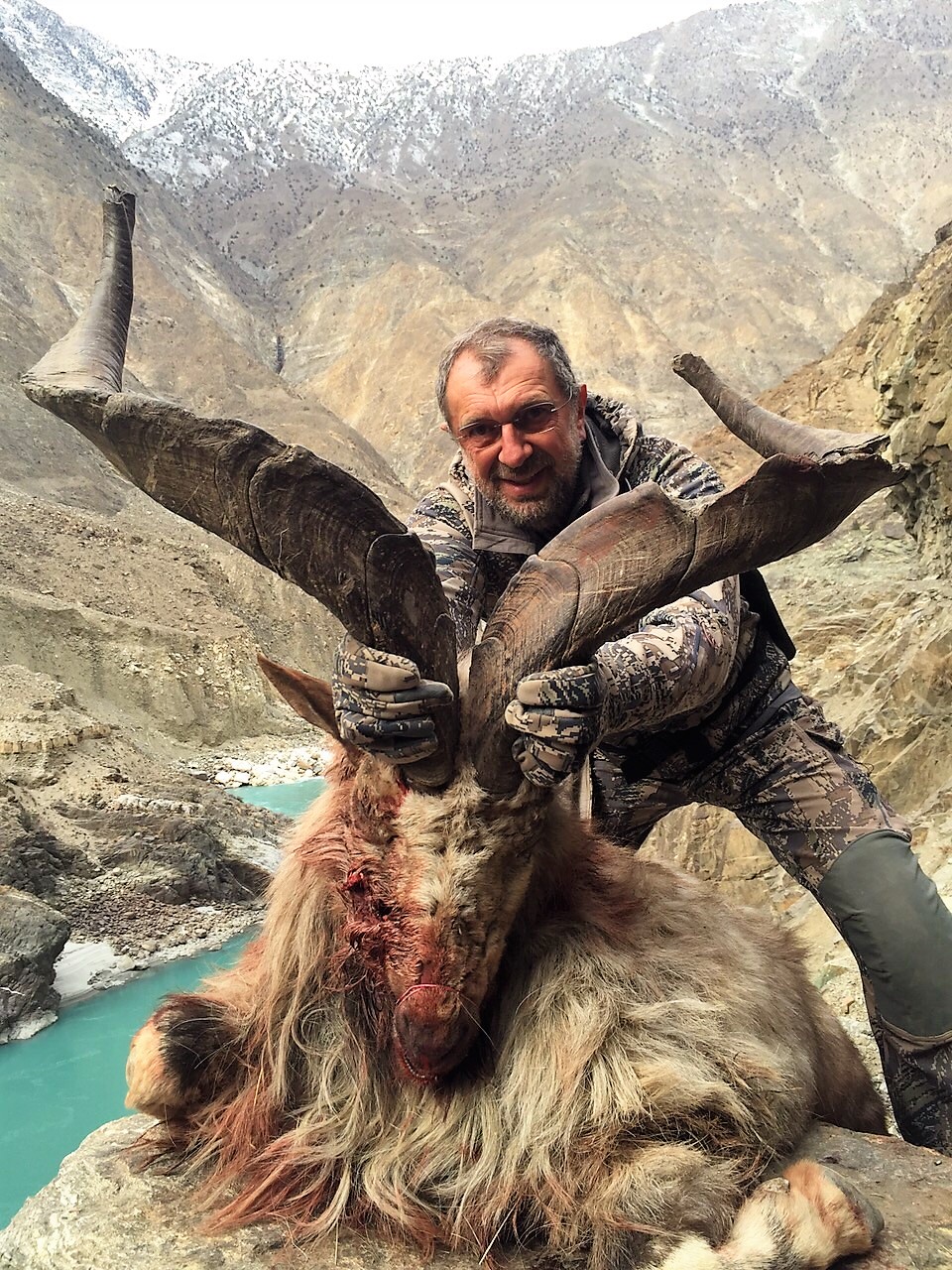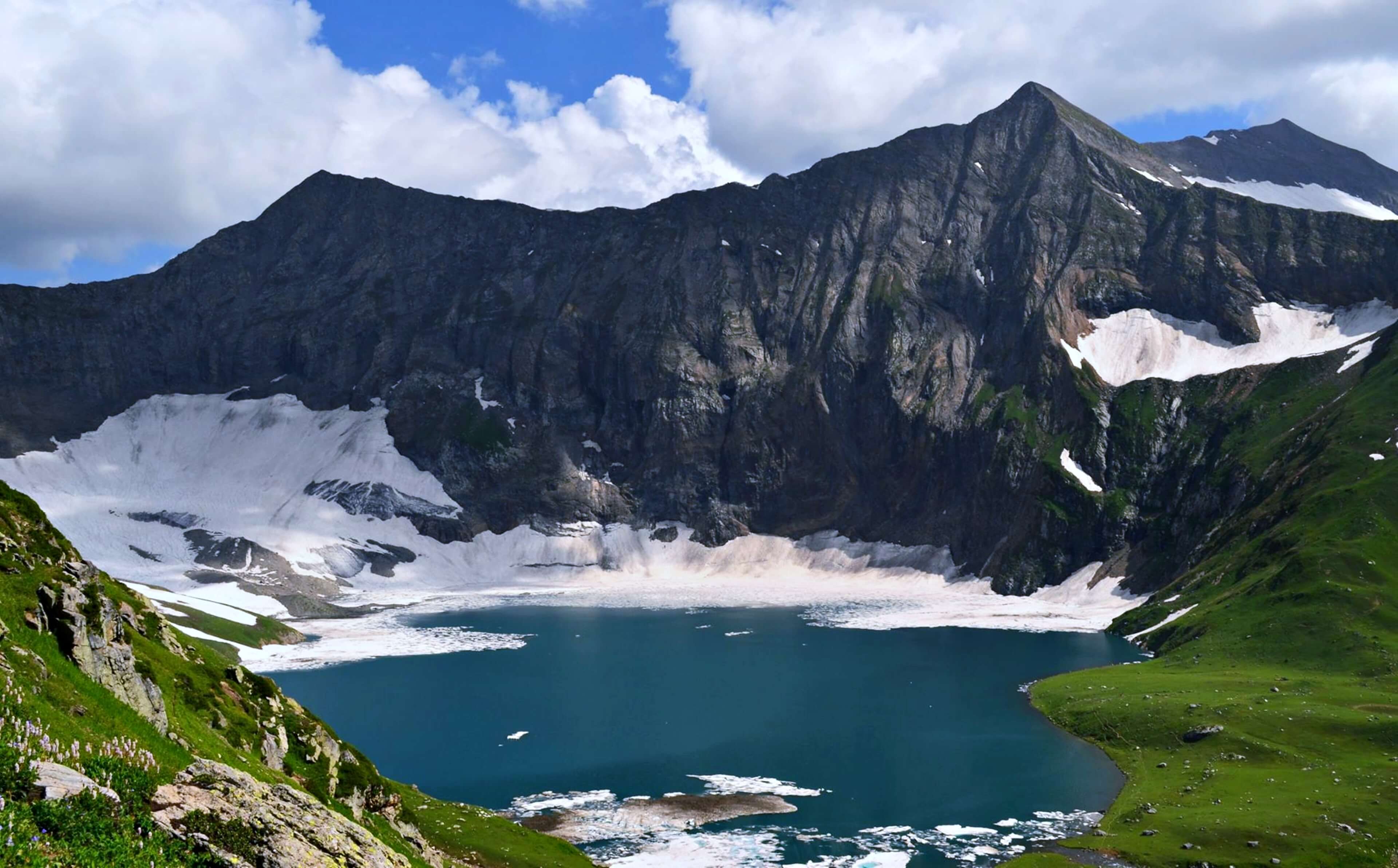ASTOR MARKHOR
SEASON: Hunting season for Astor markhor starts as early as November 1st and runs through the end of March with the rut being in December. As a general rule, we do not start hunting Astor markhor any earlier than mid November as the animals will be high due to high temperatures. December seems to be the best time as it is the rutting time. Hunters may have a better chance on bigger males during this period. And in some areas they may come to lower elevations to join female groups. Late season hunts for Astor markhor can be quite hard since the animals go to higher elevations as the temperatures rise. This is a hunt with very high success rate regardless of the time of year.
AREA: Astor Markhor is confined to small and scattered populations distributed along Indus River and its tributaries in Gilgit-Baltistan. So all of our hunts for Astor markhor take place around the town of Gilgit which is located in extreme north of Pakistan at the confluence of the great Himalaya, Karakoram, Hindu Kush and Pamir mountain ranges. The area can be characterized by rugged and precipitous mountains, high peaks, deep narrow valleys and gorges. As with all other species in northern Pakistan, markhor hunts are done only in several (6-7) community controlled hunting areas (CHAs) and based on the “Community Based Trophy Hunting Programmes” where 80% of license fee flows back through local communities to ensure sustainability of conservation initiatives. The 4 permit for Astor markhor are all issued for different locations of Gilgit district. The permits are usualy for the Juglote, SKB, Bunji, Tangir and Jutial areas where the markhor population is higher than all sixteen localities Astor markhor inhabit.
HOW TO GET THERE: Hunters are required to fly into capitol city Islamabad where they will be met by our Caprinae people. Next step is to take a domestic flight to Gilgit which is only an hour away. But flights may not be operational all the time during the winter months. Then hunters may have to take a 9 hour ride to Gilgit. This used to be a 14 hour drive but thanks to new road and better conditions, the duration of the ride was reduced greatly. It is a long, tiring ride but is also once in a lifetime experince for the adventurous soul. They will find a lot of cultural things to see along the way besides some breathtaking scenery. The auctual hunting areas can take anywhere between 30 minutes to 2 hours from Gilgit.
ACCOMMODATION: Accommodations for Astor markhor hunt can vary greatly from area to area. While the only way for loging in some areas are simple village guest houses, in other areas hunters can stay in comfortable local hotels.
WEATHER: The weather in November is usualy nice although it tends to change quickly. The average temperature in Gilgit in December for a typical day ranges from a high of 26°F (-3°C) to a low of 8°F (-13°C). Some would describe it as freezing cold and humid. Coldest time around Gilgit is usualy the month of January. A typical day ranges from a high of 21°F (-6°C) to a low of 3°F (-16°C). There's a 19% chance of rain or snow on an average day. By mid March the temperatures can start rising.
ALTITUDE: Astor markhor occupies arid cliffside habitats in sparsely wooded mountainous regions at altitudes ranging from 2300 feet (700 m) (from November to May up to 13,000 feet (4000 m) in the summer. Elevation for huntig areas vary between 3000 feet (900m) – 8500 feet (2600m).
DURATION of the HUNT: A ten day itinerary is adequate time for the Astor markhor hunt although hunters usualy complete their hunts in a few days. Local community people who are involved in hunting always do pre-scouting before the hunters arrival which shortens the duration of hunting.
HUNTING METHOD: A regular hunting day usualy starts very early in the morning by the first light. Depending on the circumstances, sometimes even earlier. Most hunts starts by walking from the village where the hunting party stays. In some areas hunters may be driven to the area before climbing. General way of hunting is spot and stalk. Since this is a community managed hunting, the whole community would like to chip in. So locals usually are out there watching for markhor. Therefore they know the whereabouts of big trophy size markhor even before the hunter arrives to the area.
NOTES on MARKHOR: Markhors were popular game animals to hunt during the reign of the British Raj and continued even after Pakistan gained independence in 1947. Ceaseless illegal hunting led Markhors to stand at the brink of extinction by late 80s. In order to save the markhor, government launched the first Conservation Trophy Hunting Programme of Pakistan in Chitral region in 1983. But trophy hunting was not community based. Income generated from trophy hunted was totally deposited in government treasury hence it could not continue for long. Program continued until 1991. In 1992, markhor was transferred from Appendix II to Appendix I of the Convention on International Trade in Endangered Species of Wild Flora and Fauna (CITES). The inclusion of markhor in Appendix I brought an end to the trophy hunting program for markhor as the Pakistani government placed a total ban on markhor hunting .During those 8 years, when the program was running, only 2 markhors were hunted every year.
In 1998 hunting was again resumed with true community participation this time. The ban was replaced by controlled trophy hunting, a programme often cited as a huge success in biodiversity conservation. 80% of the permit fee is deposited in a Village Conservation Fund (VCF) as an incentive to encourage involvement of local communities in conservation of markhor while the remaining goes to the government exchequer. This has resulted in a positive change in the attitudes of local people towards wildlife which led to an increase in the population of markhor in community managed conservation areas
There are three sub-species of markhor reported to occur in Pakistan, categorized based on their horn’s shape and twisting pattern. These are Astor Markhor (Capra falconeri falconeri), Kashmir or Pir Panjal Markhor (Capra falconeri cashmiriensis), and Suleiman Markhor (Capra falconeri jerdoni) ) although some include a small population of Kabul Markhor (Capra falconeri megaceros) as well. However Pakistani government issues permits for only three subspecies, These subspecies further categorised into two types with Kashmir and Astor being flared horn and Suleiman being straight horn.
Only four markhor of each kind permitted to be hunted every season. Another words Pakistan exports 12 markhors every year. These permits are sold out to licensed outfitters in Pakistan at open auctions. The parties place bids, and the highest bidder gets the license. Under the trophy hunting programme, the communities receive 80% of the licence fee with the government keeping the rest. The amount generated varies as there is a bidding process involved.
Trophy hunting has produced positive results as the markhor population has now increased to 3,500-4,000 in the country as compared to 1,500-2,000 in 2001.




